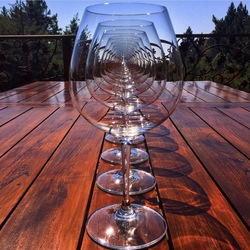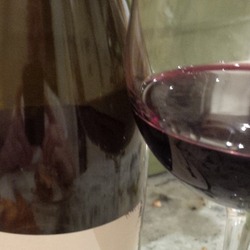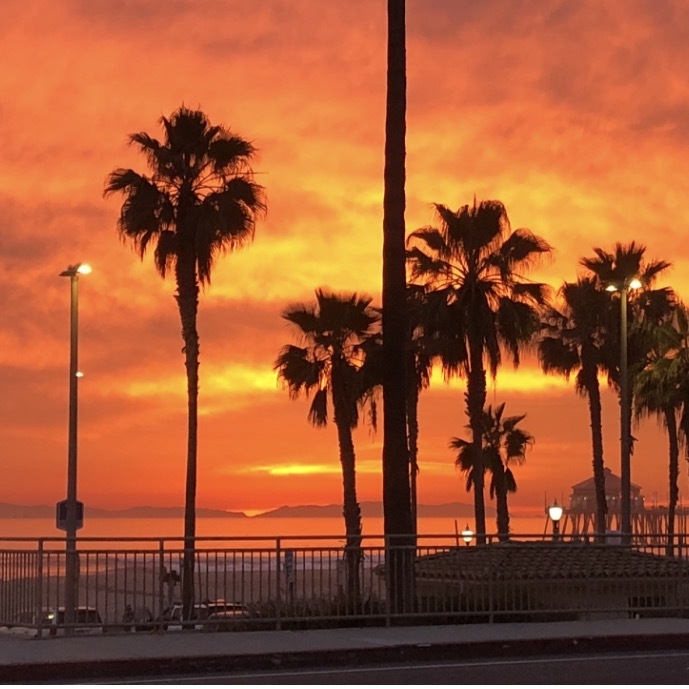Brasseries Des Sources
Château Sainte-Colombe
Côtes de Castillon Red Bordeaux Blend 1999
Cotes de Castillon is one of my favorite sources of value in Bordeaux and this one is particularly nice, although it looks like this chateau exists only as a bed and breakfast after the 2008 vintage. The grapes from the 40 acre vineyard (70% merlot/30% cab franc) are now used for the Esprit de Pavie bottling from the owners of Chateau Pavie who also own this estate. — 9 years ago
Mas des Caprices
Retour Aux Sources Grenache Blend 2014
Encore un peu jeune, très prometteur — 9 years ago
Vina Machali
Cabernet Sauvignon 2014
Had it with the winemaker: a vehement and honest French ex-pat who sources grapes from a couple of plots in the much-lauded Alto Cachapoal. Without touching the acidity or manipulating the alcohol, Machalí is elegant and poised, having precise aromas and complexity, but miles away from that über-common chocolate. — 10 years ago
Château Brown
Pessac-Léognan Red Bordeaux Blend 2009
2009 - Rouge at les Sources de Caudalie — 10 years ago
Landmark Vineyards
Overlook Sonoma County Chardonnay 2012
Nice tropical fruit. No signs of oak but a nice finish. 3 different sources of fruit I Cally. — 10 years ago
Abeja
Columbia Valley Cabernet Sauvignon 2011
Double decanted & served with dinner . Explosive nose showing black currant & mocha powder. Rich, deep palate with waves of black fruit & textured oaky spice. Plenty of youthful tannins which resolve with each bite of steak & as the wine breathes. Despite the showy fruit & tannins, this has a freshness & drinkability which is fantastic.
This has a healthy dose of Merlot blended in & a dollop of PV. From an excellent mix of top vineyards around the CV including one of Abeja's estate sources. Excellent vintage after vintage. — 11 years ago
Domaine David Clark
Côte de Nuits-Villages Vielles Vignes Pinot Noir 2011
Retour aux (bonnes) sources ! — 12 years ago
Drew Family Cellars
Gatekeepers Anderson Valley Pinot Noir 2011
Interesting light fruit 20/1. 4 single vineyard fruit sources. Full of interesting characters. Mouth watering.. One of the most interesting pinots I've had in a long time — 13 years ago
Luciano Sandrone
Le Vigne Barolo Nebbiolo
A model of finesse and understatement, the 2008 Barolo Le Vigne is every bit as thrilling as it has always been. At nearly 10 years of age, the 2008 is still bright, precise and very fresh. Sweet red cherry, rose petal and mint notes are beautifully sketched in a Barolo that is pure and total class. In 2008, vineyard sources are Vignane, Merli, Ceretta and Conterni. (Antonio Galloni, Vinous, Feb 2018) — 8 years ago
Cidrerie du Vulcain
Cidre Premiers Emois
This is as pure and crystalline as the alpine streams that flow past the centuries old apple, pear and quince trees from which Jacques sources all of his fruit. Labeled as an apple, pear and quince wine and for good reason. Elegant and floral and absolutely symphonic. — 9 years ago
Ghost Clones
Oles Vineyard Petite Sirah 2013
Gardienne des Vignes sources Zinfandel and Petite Sirah grapes from family-owned vineyards in Napa Valley. This 100% Petite Sirah comes from 20-years old bush vines in the Oles vineyard in St. Helena. Owner Russ Oles selected cuttings from extremely old vine plantings to plant his vineyard. Hence the name "Ghost Clones". Dark red. Very attractive nose with blackberries, flowers and spices, slightly Vintage Port-like. Amazingly complex and elegant for this grape variety. Warm and full-bodied with layers of black fruit and a lovely acidity, making the high alcohol perfectly integrated. Long finish. A tremendous effort for Petite Sirah. 2013 vintage, abv 15,6%, 112 cases produced. — 9 years ago
Chateau des Sources
Costières-de-Nîmes Syrah Grenache 2014
Nice clean finish — 10 years ago
Ungava
Quebec Premium Dry Gin
New and distinctive gin, botanicals from northern Quebec aboriginal sources. Who knew cloudberry was so good? This is the (good) bitter side of gin, phenomenal aromatics. Lemony-grapefruit essence. Seek this out. — 10 years ago
Brasseries Des Sources
Bellerose Biere Blonde
Fresh, floral, spicy — 11 years ago
Heartland
Directors' Cut Langhorne Creek Shiraz 2012
This is a new label and different fruit sources than used to use a step up — 12 years ago
A & P Morin
Saint-Jean Des Sources Picpoul De Pinet
Another picpoul in p-town :) — 12 years ago
Domaine des Sources
Olivier Daubresse Selections Vin de Pays du Gard Vieilles Vignes Syrah 1999
Reasonably priced older wine at mint wood place. Excellent and in great shape. — 8 years ago
David Arthur
Elevation 1147 Estate Napa Valley Cabernet Sauvignon 2001

The Four Graces
Yamhill-Carlton Pinot Noir 2010
Four Graces is one of favorite sources of Pinot Noir in Oregon. This particular one is a fave. 2010 was a good year at Yamhill. — 9 years ago
Springfield Estate
Special Cuvée Sauvignon Blanc 2014
Its so easy to lose sight sometimes. We spend so much time these days focusing on the old world, the forgotten, tradition, ect, that it sometimes feels like we ignore the new. Even when the new has history. Compiled with yesterday's Felton road chard and today's weinert, these are wines that I am embarrassed to say, I don't give enough credit too. I need to explore more. I will explore more...
back to the wine! This is awesome. The least overt of the two cuvees this focuses more on spice and savory. Planted on two separate parcel side-by-side and the same Vineyard and Robertson, these two are made identically according to "inside sources", and couldn't be further apart. — 10 years ago
Château Sigalas Rabaud
Sauternes Sémillon-Sauvignon Blanc Blend 2010
2010 - La Table du Lavoir at les Sources de Caudalie — 10 years ago
Giacomo Fenocchio
Barolo Nebbiolo 2010
2010. What a lovely lifted finish! Makes me think of Serralunga. Wondering where the vineyard sources are here. — 10 years ago
Stottle Winery
Tempranillo
This Tempranillo from Stottle Winery is incredible! Notes of spice, blackberry, bing cherries, and tart strawberry. The grapes are sources from the Columbia Valley WA while Stottle is located in Hawks Prairie, Lacey, WA. — 11 years ago
Flying Goat Cellars
Sierra Madre Vineyard Pinot Gris 2010
This label sources from 9 different vineyard sites. A more austere style of Pinot gris — 12 years ago
Domaine Vincent Prunier
Meursault Chardonnay 2008
Located in Cote de Beaune, south of Volnay and north of Puligny Montrachet. Meursault ("Murr-so") has historically been Burgundy's center for white wine production. In fact, nearly all of the 2.5 million bottles produced from 440 ha (1,090 acres) are whites. The soil is a mixture of marl and chalk and is perfectly suited to the production of chardonnay. Meursault wines are known for aromas of hazelnuts, honey and vanilla for its aromas and creamy, almost olive oilllike texture. There are no grand crus in Meursault, though Les Perrières, Les Genevrières and Les Charmes produce remarkable wines. Further, some of the most well-known vineyards of Meursault such as Narvaux and Limozin are not premier cru but Villages-classified vineyards. Recent top vintages include 2008, 2007, 2005, 2002, 1999, 1996, 1993, 1990.
With 437ha. of vineyards dedicated to Villages wine or Premier Cru, Meursault has the largest area permitted to be planted in white wine in the Cote-d'Or. Furthermore, despite the fact that the village lacks even one grand cru, Meursault has historically been Burgundy's center for white wine production, in the past even more so than Puligny-Montrachet or Chassagne-Montrachet. While much of those two villages had in the past been planted to red grapes, Meursault has always been white wine territory. In fact, the modern day vineyard of Les Combettes in Puligny-Montrachet, which forms a continuous chain with the premier crus of Meursault, was once considered part of Meursault and not Puligny, where the many nearby vineyards produced red wine. There are several important factors that determine the reputation of Meursault. Primarily, the soil throughout most of Meursault is perfectly suited to the production of chardonnay; it is a mixture of marl and chalk, that when combined with a largely east or southeast exposure creates healthy grapes that are full of character. Another factor correlates to geology, though in a very different way. Meursault's high water table allows its residents to carve deep, cold cellars "perfect for the production of wine" into the chalky, stony soil. So, while large negociants from Beaune dominated the production and marketing of Burgundy throughout time, Meursault remained a wine of its own citizens. Contributing to this, since red wine has been more prized throughout time, these same negociants looked elsewhere for sources because the wine of Meursault has always been white.
What makes the wine so special? The most common descriptors attached to Meursault are hazelnuts, honey and vanilla for its aromas and creamy for its texture. However, this simplifies things quite a bit. In most cases, Meursault despite an almost olive-oil texture is countered by a precise mineral character, stoniness and a more refined overall palate than, for instance, Chassagne-Montrachet. It's the unique stony/mineral character that often gets lost when tasting Meursault, as many concentrate on the ripe, hedonistic primary flavors and aromas. It's the bipolarity of the wine, the interplay of both factors, that makes Meursault one of the most sought after white wines in the world. As mentioned above, there are no grand crus in Meursault, though many would argue that Perrieres, Genevrieres and Charmes can attain these lofty heights in the hands of the best producers. Further, some of the most well-known vineyards of Meursault such as Narvaux and Limozin are not premier cru but Villages-classified vineyards, though again, the best examples are clearly of higher quality. source: http://www.burgundywinecompany.com/wines/display.php?subregion=Meursault — 12 years ago



















Isaac Pirolo
Pillow Rd. Vineyard is situated to the southwest of Sebastopol, not far from the southern tip of the Russian River Valley, and planted to two acres of Chardonnay and seven acres of Pinot Noir. Clones 777, 115, and Pommard made up the first plantings in 2000, with Calera and Swan being added later (replacing Gravenstein apple trees). The vineyard has courted her fair share of suitors, originally being one of Duckhorn’s sources for its Goldeneye Pinot Noir. The first commercial vintage under the Pillow Rd. label was 2006. I’m not sure whether Ladera had entered the scene at that point, but it was definitely in time for their release of the 2009 vintage. In 2016 PlumpJack Group acquired Ladera’s Howell Mountain vineyard and winemaking facility, and while it appears the Pillow Rd. Vineyard wasn’t included in that sale, I haven’t seen anything that spells that out explicitly. Regardless, what is certain is that Napa Cab makers can’t quit this Russian River Pinot vineyard. It had some kinks to work out, but ultimately it’s built for pleasure and not complexity, and it eventually got there. Cherry cola, sassafras, baking spice, butterscotch, and just enough of a citrus edge to keep from losing its balance. — 8 years ago